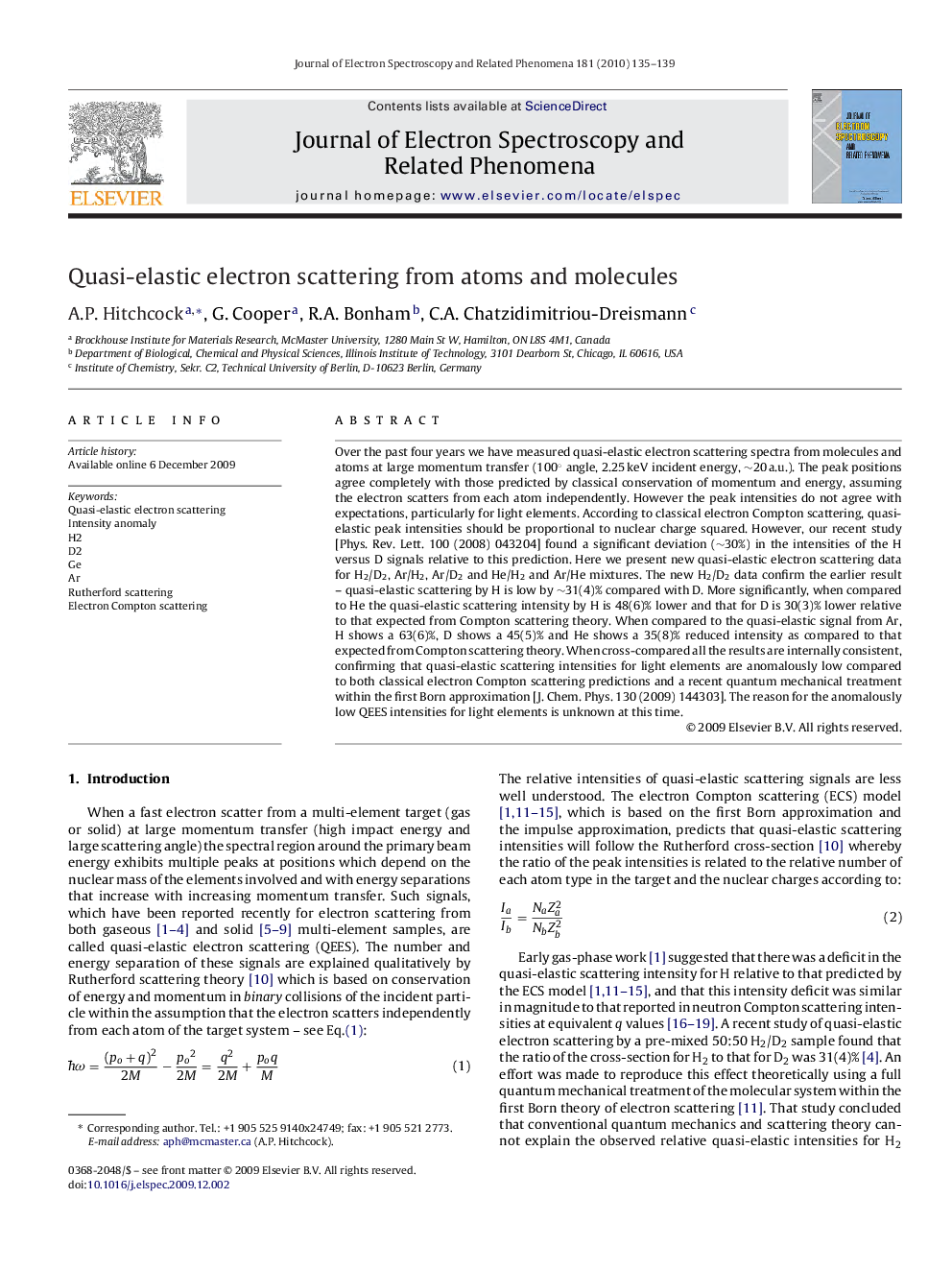| Article ID | Journal | Published Year | Pages | File Type |
|---|---|---|---|---|
| 5396315 | Journal of Electron Spectroscopy and Related Phenomena | 2010 | 5 Pages |
Abstract
Over the past four years we have measured quasi-elastic electron scattering spectra from molecules and atoms at large momentum transfer (100° angle, 2.25 keV incident energy, â¼20 a.u.). The peak positions agree completely with those predicted by classical conservation of momentum and energy, assuming the electron scatters from each atom independently. However the peak intensities do not agree with expectations, particularly for light elements. According to classical electron Compton scattering, quasi-elastic peak intensities should be proportional to nuclear charge squared. However, our recent study [Phys. Rev. Lett. 100 (2008) 043204] found a significant deviation (â¼30%) in the intensities of the H versus D signals relative to this prediction. Here we present new quasi-elastic electron scattering data for H2/D2, Ar/H2, Ar/D2 and He/H2 and Ar/He mixtures. The new H2/D2 data confirm the earlier result - quasi-elastic scattering by H is low by â¼31(4)% compared with D. More significantly, when compared to He the quasi-elastic scattering intensity by H is 48(6)% lower and that for D is 30(3)% lower relative to that expected from Compton scattering theory. When compared to the quasi-elastic signal from Ar, H shows a 63(6)%, D shows a 45(5)% and He shows a 35(8)% reduced intensity as compared to that expected from Compton scattering theory. When cross-compared all the results are internally consistent, confirming that quasi-elastic scattering intensities for light elements are anomalously low compared to both classical electron Compton scattering predictions and a recent quantum mechanical treatment within the first Born approximation [J. Chem. Phys. 130 (2009) 144303]. The reason for the anomalously low QEES intensities for light elements is unknown at this time.
Keywords
Related Topics
Physical Sciences and Engineering
Chemistry
Physical and Theoretical Chemistry
Authors
A.P. Hitchcock, G. Cooper, R.A. Bonham, C.A. Chatzidimitriou-Dreismann,
